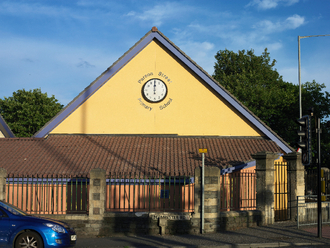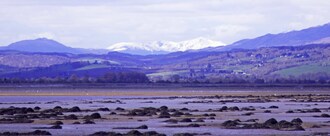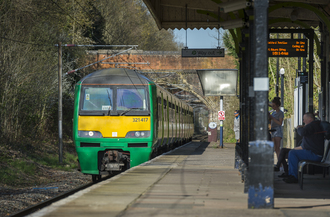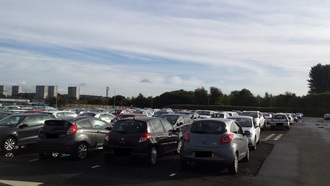-
Re-open Hurst Clough Bridleway, Mottram in LongdendaleIt is important for the safety and well being of horses and riders.398 of 400 SignaturesCreated by lesley cheetham
-
Save Historic Hythe Pier & FerryThe pier was opened in 1881 and the pier train is in the Guinness Book of Records as 'the oldest working pier train in the world'. It provides a vital link between Hythe and Southampton and is a part of our history and heritage. The community led campaign encourages increased use of our waterways and in turn, this will help to reduce traffic congestion on our roads into the city and pollution levels both sides of the water.9,380 of 10,000 SignaturesCreated by Maggie Blight
-
Complete the BearsWay projectThe BearsWay project is an important initiative for increasing sustainable transport. It has sadly been shouted down by a small but vocal minority who do not like the changes. They have been reiterating several pieces of misinformation (below), and it seems that the local councillors have been swayed by their rhetoric. Many of the councillors who voted for the amendment which scrapped Phase 2 of the BearsWay did so in opposition to their own parties' sustainable transport policies (Lib Dem and SNP councillors, specifically). Some of the misinformation presented by the opponents to the BearsWay: 1) They claim that the road has been narrowed to an unsafe width, and is difficult to drive on, and that emergency response vehicles are unable to pass cars. Having had discussions with Blue Flag drivers, ROSPA advanced drivers, Driving Instructors, the Police, and Ambulance drivers, there is no evidence to support this assertion. If one drives to the speed limit (30mph), there is no difficulty navigating the traffic calming measures. We suspect that a number of people who used to drive the road at speeds in excess of the limit are angry that they can no longer do so. I have not spoken to an Ambulance Driver who had an issue with the width of the road. 2) They state that a majority of residents are against the proposals. There is no evidence whatsoever for this. There was a petition against the BearsWay which gathered 2,500 signatures, a number of whom are not local. There are 30,000 people local to the area, and 18,000 daily journeys on the road. 3) They complain that cyclists do not use the cycleway provided. This has been measured, and 92% of cyclists use the segregated cycle lane. There are several possible reasons for the minority not using it, including: It is very difficult to enter the cycle lane Northbound, as it requires crossing a busy lane of oncoming traffic, which is particularly difficult during peak times. Some cyclists were unaware of the cycleway, as it is not well signposted. The link from Burnbrae Roundabout to the crossing at MacDonalds is awkward to negotiate, and interrupts the route - it is far more straightforward Southbound to stick to the road for 200 yards until the crossing point moves the cycle lane to the left hand side of the road (and this also holds up traffic less than using the crossing lights) The BearsWay is not finished - the remaining phases would have addressed the issues in getting on to the cycleway safely. 4) The reduced lanes cause congestion. a) There was only ever one lane in each direction - this is the same. b) There is no evidence of increased congestion - the average journey time along Milngavie Road has increased by approximately 1.3 seconds according to a commuter who logged 150 of his journeys.. 5) There was nothing wrong with the road as it was, and therefore no need to change it. Note that 3,000 cyclists are KSI'd (Killed or Seriously Injured) on UK roads each year. This number is rising year on year. These deaths are caused by collisions with motor vehicles, most commonly when a motor vehicle driver violates the cyclist's right of way. Firstly, the old cycle lanes were poorly marked, and often poorly maintained as well; Cars regularly parked in them (they still do on the section from the Burnbrae Roundabout to Milngavie Precinct); Motor vehicles regularly cut into them in order to cut corners; Motor vehicles tended to drive faster than the speed limit. To conclude, a quote from an excellent article (Blog) on the need for change (Source here: http://www.magnatom.net/2016/09/east-dunbartonshire-time-for-change.html) It's not easy of course, because Change never is. It involves making some sacrifices. It means that a road might have to be a wee bit narrower. It means that occasionally you might have to wait behind a bus for 20 seconds. It means that occasionally at junctions, priorities might need to be adjusted. The odd parking space has to be lost! It feels like our liberties are being taken away from us. Are we truly free though? Is having a congestion free dual carriage way Bearsden Road which you can zoom down at 40 mph without impediment in your car really freedom? Only to be stuck in 2 miles of nose to tail traffic on the Switchback Road, which is already dual carriage way, so perhaps we need three lanes each way? What about those that can't drive, perhaps as they are too young, can't afford it, or are not able to through disability. Sure, the bus is one option, but it will never truly provide the freedom that we yearn, by taking us from where we live to where-ever we want to go. It will help to some extent, and is part of the integrated solution, but it is not the whole answer. Freedom only comes when all those who wish to travel, by whatever means they wish, can do it in a way that is safe, comfortable and convenient. As London, and countless other examples demonstrate, if you build it, they will truly come. And they will come with the many, many benefits that having a significant percentage of your populations travelling actively will bring. So I call on the politicians and especially the councillors of East Dunbartonshire to think carefully about the future. Not just their own future, or at the ballot box next year, but for the future of an area I am sure they really do care for. I ask for them to consider that Change, even politically difficult Change is not only desirable, but needed for the area to flourish. Yes there is a strong local voice against it, but then many of them don't want children to have freedom of safe movement. Is that what you and your party stand for? Really? If they choose not to invest in active travel, the area will drown under the weight of the motor vehicle, something that even many of the opponents of the BearsWay agree is an issue. Be on the side of change. Be on the side of a brighter, healthier, less polluted, less congested East Dunbartonshire.3,289 of 4,000 SignaturesCreated by Phil G
-
Pedestrian Crossing A27/Peak Lane/Catisfield RoadWith the update works on the A27 and the forecast increase in traffic, a pedestrian crossing is desperately needed at this point. The road is being crossed regularly by pedestrians to access 4 schools, 2 pre-schools and a pub as well as normal journeys between friends and relatives. This safety feature is urgently needed and should have been included in the original upgrade plans for the A27. There is a crossing on every other major junction along this stretch of the A27 but not one at probably the most frequently used, certainly by young children. For the safety of our children as well as parents, locals residents and those who support the local public house, please support this petition to push for the Council/Highways Authority to install a fully lighted pedestrian crossing as a matter of urgency.468 of 500 SignaturesCreated by Clive Nixon
-
Clean up London air and reduce pollution by busesIn the UK 40,000 people die early each year as a result of dirty air. We need to do everything we can to tackle this. One of the things that adds to the pollution in London is that bus drivers do not switch off their engines when their buses are stationary or parked. Anti-idling devices would help reduce emissions. Diesel emissions are causing ill-health in children and vulnerable adults. The cost of retro-fitting anti-idling devices would be more than covered by the fuel saving.612 of 800 SignaturesCreated by Maria Sheppard
-
Say NO to the road changes that will ENDANGER school children - UPDATEDUpdate 03/01/17 Following our petition there were some community meetings held at Parson St School. At these it was heard “that petition really kicked up a stink!” [at the Council] and Metrobus acknowledged the need for additional safety measures, described many options and said they would consult the residents of Highbury road, though would give no timescale. Since then we have asked when we would have responses to the concerns that were submitted as objections to the traffic order and been told that no responses were formalised but the comments were taken into account as part of the decisions report. The decisions report does not get published – instead you have to write/email to get a response. Please take the time to do this, contact details below. It does not seem right that this is not automatically published given the high level of concern and numbers of us signing the petition – show them that the response is important by contacting them and asking for an update. If we all do this they will realise that it would be better to issue a public response and that we will not be fobbed off over our children’s safety. Also since the issues were raised we have had no indication of what action, if any, they will be taking and they have not communicated with the local school over this, despite there being ongoing campaigning for greater road safety prior to this new issue. There is another meeting but the council will not be writing to residents about this meeting (as it is not an official council event) – please attend if you can and show your support. Monday 16th January at 6.30pm at Parson St School, Bedminster Road entrance – share with everyone and encourage people to attend as all eyes will be on the turnout. If you would like any updates you need to contact Councillor Mark Bradshaw –do it as soon as possible so we start the New Year showing we are committed to keeping our children’s safety a priority. Correspondence address: c/o Labour Group Office City Hall PO Box 3176 Bristol BS3 9FS Bus. phone: 0117 353 3160 Email: [email protected] ************************************************************************************************ Original content The proposed changes will increase traffic on the already congested Bedminster Road. Hartcliffe Way and Highbury Road. These are roads directly by the school and where the school entrances are located and the community is already concerned about safety. Furthermore the proposed changes include removing a crossing which is opposite the school which children use to cross Hartcliffe Way (an exceptionally busy road) safely. With increased traffic and reduced crossings our children's safety is being compromised significantly. Please look at links and object through the council as well as signing this. (NOTE these 2 links no longer work as initial consultation has closed). https://www.bristol.gov.uk/documents/20182/1116390/E14017-TRO-450+Hartcliffe+Way+movement+Restrictions.pdf/0c61715e-202f-4b69-8c83-b6a9045d02f1 https://www.bristol.gov.uk/documents/20182/1116390/Statement+of+Reasons+v2.pdf/f7124074-9bf2-47ce-80de-ba3709f69d76 This is copy and pasted - it has the information to email/write and officially object - please take the time to do this - you are welcome to use points from this petition to do so. We have so many signatures and growing each day but we need the emails/letters too. Many thanks. ************************************ CITY OF BRISTOL (HARTCLIFFE WAY AND PARSON STREET, BISHOPSWORTH AND FILWOOD WARDS, CITY OF BRISTOL) (PRESCRIBED AND PROHIBITED MANOEUVRES) ORDER 20-- The City Council of Bristol hereby gives NOTICE it proposes to make a traffic order, the effect of which would be:- 1. to introduce a southbound in A4174 Parson Street prescribed straight ahead into southbound A4174 Hartcliffe Way at its junction with Parson Street eastbound carriageway; and 2. to introduce a prohibition of right turn from northbound on A1474 Hartcliffe Way into Parson Street eastbound carriageway. Further information available from 16th September 2016 Further details of all the proposals are contained in the draft order, which together with plans and a Statement of the Council’s Reasons for proposing to make the order may be inspected at the Citizen Service Point, 100 Temple Street, Bristol, BS1 6AG, between 10.00 a.m. and 4.00 p.m. on Monday to Friday. The draft order, plans and Statement of Reasons are also available to view on the City Council website at www.bristol.gov.uk/trafficorders. In addition, the draft order, plans and Statement of Reasons are available to be inspected at Marksbury Road Public Library, Marksbury Road, Bedminster, Bristol, BS3 5LG during normal opening hours. How to object Objections to the proposals, together with the grounds on which they are made must be sent in writing to TRO Comments at the undermentioned address or by e-mail to [email protected] quoting reference CAE/NMT/P-1011A by 10th October 2016. Please include your name and address and note that all representations received may be considered in public by the City Council and that the substance of any representation together with the name and address of the person making it could become available for public inspection. Highways Service (WH) P. MANN PO Box 3176 Service Director Transport Bristol BS3 9FS Date: 16th September 2016817 of 1,000 SignaturesCreated by Jazz Basma
-
More rail track between Inverness and BeaulyIt's around 8am on a dusky day in July 2016, and I'm standing on the far platform of Tain railway station, gazing out into the misty depths of the Dornoch Firth. The previous night I had come up on the late train - the 21:06 - from Inverness, though there's also a midnight service north. That left from Platform 7, which, intriguingly enough I had to walk across a car park to reach. Very few rail journeys start with a walk through a car park. But, increasingly often, many, many journeys from Wick and Thurso to Inverness involve a walk across a car park. This walk culminates with getting into a car and, well, driving down the A9. And why is this? There is a perfectly good rail line linking Thurso and Wick with Inverness, via the commuter towns of Dingwall, Tain and Invergordon, with four trains up it and down it each day (only one on Sundays). Many people marvel at the beauty of the line - it traverses all kind of landscape; the Beauly Firth, the Dornoch Firth, the Cromarty Firth, the mountains of Sutherland, Loch Fleet, incredible seascapes, marshy vistas, and vast tracts of peat bogland (the Flow Country). The line also connects with the NorthLink ferries north from Scrabster, near Thurso, to Orkney, and many people use these each year. In fact, I do. It's why I was at Tain in the first place. At Dounreay, on the north coast near Thurso, there used to be a nuclear power station. As this is decommissioned, things are transported out to Sellafield by rail. There's also timber extraction going on near Kinbrace en route - and the trees could be transported by rail. So why are people not using the line as much? Unsurprisingly, it's to do with the service. Things have become very unreliable. Delays and cancellations occur very frequently. Stops are often omitted at some of the line's busiest stations - including Thurso and the recently-reopened Beauly and Conon Bridge - to make up the time lost. The chronic problems behind these occurrences are caused by a combination of missing infrastructure and absent crew members. Out of these two, the infrastructure is the biggest problem with the line. But why is this? Well, the line is single track for its whole length, aside for some 'passing loops'. This is where there are two lines, or 'double track', but only for a short distance (think road 'passing places'); and there are loops at Muir of Ord, Dingwall, Invergordon, Tain, Ardgay, Lairg, Rogart, Brora, Helmsdale, and Forsinard. Otherwise, the train's can't pass each other. Because of this, delays can build up, causing a knock-on effect that leads to cancellations and skip-stopping. The stretch of railway between Inverness and Dingwall has only one passing place, at Muir. But this line is shared with the service to Kyle of Lochalsh (for Skye) and sees 13/14 trains per day in each direction (7 on Sundays). That's nearly 30 trains a day; and the constraints provided by the lack of track on the Far North Line, in particular between Inverness and Muir, mean that many, many of these are delayed, or cancelled. And so we return to Tain. My train northwards arrives a couple of minutes late. Not much of a delay, though we manage to pick up more and more delays on route, so that we end up around 15/20 minutes behind time on reaching Thurso. This makes commuting between the towns and villages on the southern section of the line and Inverness very difficult. And it also severely affects the northern end, too; because Thurso serves the ferry services at Scrabster and Gills Bay to Orkney. People need to be able to make their connections; being shunted out into a taxi at Wick doesn't help with things. But there is a solution. Until 1966, there were six miles of double track between Clachnaharry - to the west of Inverness - and Clunes, near Kirkhill. Since this was ripped away, this bottleneck has become worse, and worse, and worse. This is the solution; the Lentran Long Loop, as it's become known to the Friends of the Far North Line (or FoFNL). But why the name? Well firstly, it would go through the Lentran are. And secondIy: in railway terms, a 'dynamic loop' is a passing loop that's long enough to allow two trains to pass without stopping. For example, there's a couple on the main line south of Inverness, and there's one on the line from Glasgow to Barrhead and Kilmarnock. Having the Lentran Long Loop would improve services massively. An hourly service from Inverness to the towns of Easter Ross - Beauly, Muir of Ord, Conon Bridge, Dingwall, Alness, Invergordon and Tain - would become possible. Scenic tourist trains could run down the line, boosting the local economy in a ways similar to the North Coast 500 road route. The line could become a major freight corridor. But, more importantly than all of those: the trains could run on time. The ball is in your court.169 of 200 SignaturesCreated by Sam Stevens
-
Save the Abbey LineClosing existing rail lines and converting them to BRT is a bad idea for five key reasons: • environmental impact • passenger comfort and perception • loss of network benefits • reliability • cost It is widely acknowledged that given a choice, people see rail / light rail as a superior mode to bus, and would be more encouraged to switch to rail should the service be enhanced. Removing the line from the rail system means that people would see it as ‘just another bus route’, rather than as a feeder to the rest of the rail network. Bus usage has been on a steady downward trend outside London since 1986 whilst rail usage is at record high levels. On the environmental impact, a simple appreciation of physics confirms that the rolling resistance of a rubber-tyred vehicle on a concrete track is significantly higher than steel wheels on steel rail. Furthermore the imposition of BRT would imply dismantling of the existing Overhead Line Equipment (OHLE) which allows trains / light rail to operate with zero emissions at the point of use. On the contrary, it is assumed that buses operating under BRT would have to be self-powered, each having to carry around their own power unit, with consequent penalty for weight and hence fuel consumption. If they were to be diesel-powered, this raises serious questions about the impact on local air quality. The consequences of pouring thousands of tonnes of concrete to create the guideways in itself is a CO2-intensive activity, additionally noting that doing so through Bricket Wood would be within a designated Site of Special Scientific Interest (SSSI). On reliability and cost, a ‘pioneering’ scheme on the old Cambridge to St Ives railway line suffered severe delays, cost overruns and quality failings – which are still being addressed. To make the service more attractive and boost ridership, ABFLY have long been calling for an increase in the service frequency on the single track line, which provides a train every 45mins in each direction. They believe this can be achieved by installing a ‘passing loop’ and bringing in a second train to operate a higher frequency shuttle. The costs of building a passing loop are thought to be somewhere between £4m and £7m based on historical estimates. Whilst the Hertfordshire Rail Strategy, published last July, dismisses the passing loop as, “unlikely to be considered by funders as a priority, as it would require provision of two train sets and train crew in place of the current one, making it difficult to achieve a favourable business case”, no such business case has ever been presented for public scrutiny, and in any case it is thought to be severely undermined by a high level of usage going unrecorded because of ticketless travel on the branch. This issue has recently been acknowledged by the Department for Transport’s very own figures. According to the Transport Vision document, the cost of the BRT scheme is quoted at £90m, over ten times the price of a passing loop, but no business case is presented for BRT either.116 of 200 SignaturesCreated by Dave Horton
-
SAVE OUR OFF SITE CAR PARK FOR NHS STAFF!Public transport is not reliable when staff work shifts as bus timetables are reduced and some staff are having to rely on buses and trains which can add up to 2 hours if not more on to an already busy working day when in some instances a car journey is only 30 minutes for the same destination. Staff are already under pressure to arrive at work on time without having to try and find a parking space. All we ask is that Greater Glasgow and Clyde NHS continue to provide an off site car park for their staff to allow staff to travel to work in the knowledge they will be able to park their car safely and will have a parking space. The staff who already use the current off site car park are happy to walk the 10/15 minutes from the car park to the hospital and would be happy to continue to do this.1,476 of 2,000 SignaturesCreated by Michelle Hughes
-
Car pollutionIt is clear the world is heading for a man climate change disaster . Sending the wrong nessage out to car makers and customers will speed up the process of change , with more storms and floods. It I'd to to accept our social responsibilities and urge the government to think again.3 of 100 SignaturesCreated by Stephen Cape
-
50% refund if no seats on trainThis would incentivise railway companies to put on enough carriages or services so that people could travel sitting down on seats, instead of standing up or blocking the aisles. I don't like having to pay some £60 for a standard class off peak return to London only to find some mornings that I have to stand for much of the journey, or chance sitting in a reserved seat and hoping that the seat holder doesn't turn up.21 of 100 SignaturesCreated by Dr Phil Wadey
-
Put a stop to dangerous parking at Oldfield Brow SchoolWhen parents park in these places it leaves those crossing the roads unable to see and be seen as they create blind spots for both drivers and pedestrians. Even worse is when parents are forced to walk into the road at the busy junctions with their children in tow, often with push chairs because drivers have left no space on the pavement (such as the bottom of Hillcroft Rd). These drivers also create a nuisance to neighbours, making life during the week stressful and upsetting. These inconsiderate drivers do not care, and despite Mr Merrell (the headteacher) doing his best to control the situation the drivers of the cars just do not care, even ignoring him when he stands at the school gate to try to deter this behaviour. He receives around 6 parking complaints a day, so it is time we helped and made our voices heard. Mr Merrell has been asking the council to make our area into a category B parking area which will mean we will have parking attendants to deter the bad parkers and make them park further away from the school. Please help us and help yourselves and your children by signing this petition! Once we have reached 100 signatures it will be sent into Trafford Council. So many of us are fed up and angry with the terrible parking happening on our doorsteps and outside of our children's school. Please help make a difference by signing the petition and campaigning for traffic wardens to be in force at school pick up and drop off times.137 of 200 SignaturesCreated by Sabrina Brown
Hello! We use cookies to improve your experience by providing insights into how the site is being used. Find out more.
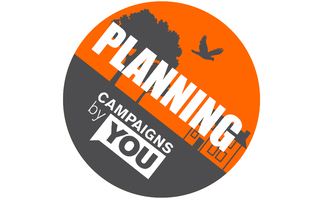
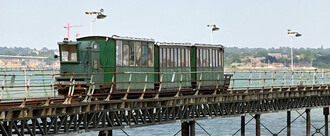
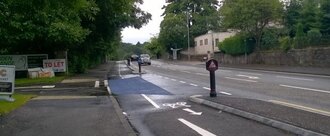
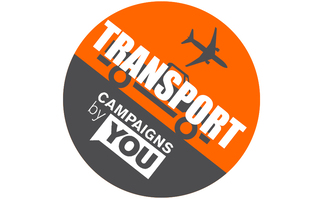
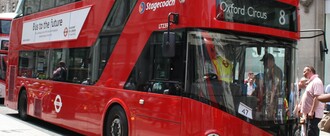__Regent_Street_Bus_Cavalcade_(1)_(cropped).jpg)
